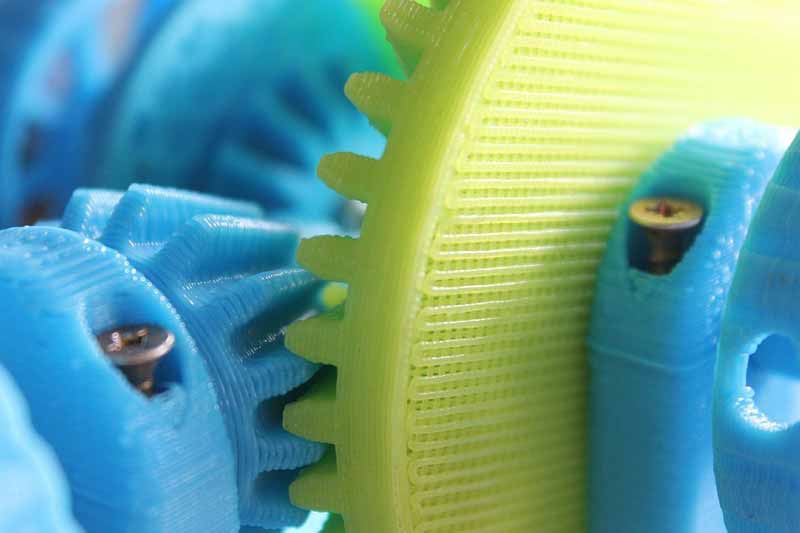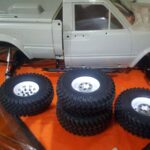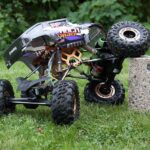The 2 Types of Differentials That RC Cars Have (Full Guide)

Differentials are an important part of any RC car. They allow the car to rotate and corner smoothly, without losing traction.
But what exactly is a differential, how does it work, and does all RC cars have differentials? In this article, we will take a look at differentials and answer some common questions about them.
What Is The Differential That RC Cars Have
A differential is a mechanism that allows a vehicle to rotate around a turning point without losing traction of each wheel. It does this by allowing each wheel to rotate at different speeds.
This is important, as it allows the car to corner smoothly and without losing traction.
The differential works by using a set of gears that are connected to the drive axle. These gears rotate the axle, which in turn rotates the wheels. The gears are arranged so that they can rotate at different speeds, allowing each wheel to turn independently of the other.
RC Cars Are Sophisticated Machines That Have Differential
Almost all RC cars use a differential mechanism. Without it, you would not be able to take corners smoothly.
The larger the diameter of the wheel (and therefore the greater distance covered per wheel rotation), the larger the differential gears need to be. This is why you will see that RC monster trucks have a much larger differential than smaller cars.
The differential will not prevent your car from losing traction. It simply allows the car to rotate around a turning point without losing traction of each wheel. If one or more of your wheels lose traction, the differential will not stop you from losing control.
Most RC cars have at least one differential (if they are 2WD), and some have two or even three.


Do RC Cars and Conventional Cars Have The Same Differential?
The differential is an important part of any 4-wheel vehicle, regardless of whether it is an RC car or a conventional car. However, there are some differences between the two types of vehicles.
The most obvious difference is that RC cars have a smaller differential than conventional cars, as the wheels on an RC car rotate more quickly. This is necessary, as an RC car wheel travels a shorter distance than a conventional car due to its size. However, both mechanisms work in essentially the same way, and they both serve the same purpose.
The 2 Types of Differential Used in RC Cars
There are two different types of Differential, a gear-style diff and a ball-style diff.
1. A gear-style differential
A gear-style differential is the most common type of differential on an RC car. This type of differential uses gears to split torque between the two drive wheels.
There are several different types of gear diffs, including one that has metal gears and others that use plastic gears with steel pins in place of the metal teeth. This type of diff is most common in RTR cars or monster trucks. Adjusting these gears is slightly more complicated, as you will need to open the diff housing and adjust the different gears.
2. Ball-style differential
A ball-style differential is another type of differential that you might find on an RC car. It works by using small metal balls to transfer torque between two drive wheels.
This type of differential is less common than a gear-style diff, but it does offer advantages. They tend to be simpler and more compact than gear diffs. They also tend to be more reliable, as they are less likely to break or seize up. adjusting them is also fairly simple, as all you will need to do is tighten the diff screws. The more you tighten the screws, the more tightly the balls will be held in place, and the more pressure will be needed to get them to slip.
Adjustments That Can Be Done On An RC Car’s Differential
While the differential is an important part of any RC car, it is also adjustable. This means that you can change its behavior to suit your driving style or the conditions you are driving in.
A few examples of adjustments that can be made on an RC car’s differential include:
- Adjusting the gear mesh on a gear-style diff: This will change how much torque is transferred between the two drive wheels.
- Changing the viscosity of the differential oil: This will change how easily the differentials slip.
- Adjusting the ball tension on a ball style differential: This will change how easily the differentials slip.
You can also make changes to your diffs depending on the conditions you are driving in. For example, if you are driving on a slippery surface, you can tighten your diffs to make them grip better. If you are driving on a hard track with no traction, loosening them will allow the differentials to slip.
These adjustments can be helpful in changing how the differential behaves on the road, but they are not necessary. Most RC cars come with the optimal settings built-in, so you will need to adjust them only if you are trying to gain better(or different) control of your car.
Common RC Car Differential Problems
There are a few common problems with the differential that you might come across.
- The differentials will not engage: This is mostly caused by incorrect diff adjustments or broken gears.
- The differentials are too tight: This can cause the car to spin out or not be able to turn correctly.
- The differentials are too loose: This can cause the car to slide excessively and lose traction.
- The differentials are locking up: This can cause the car to slide excessively and lose traction since the wheels are not able to rotate at different speeds.
- The differentials are making a whining noise: This can be caused by an excess amount of oil that is being released from the differential.
- Broken teeth on the gears: this will cause the wheels to be unable to engage or work properly.
These faults are pretty common, but they are also easy to fix. You will need to diagnose the problem and then adjust your differentials accordingly
How to Maintain Your RC Car’s Differential
If you want your differentials to work smoothly and without any problems, then you will need to keep them clean and maintain their lubrication.
- The first thing that you can do is clean off the dirt from the diffs after each drive session. When the car is dirty, it will collect dust that can compromise your differential’s health.
You might also want to clean your differential oil with a decent grease and grime cleaner. - Second, you will need to reduce friction in the differentials by keeping them well-oiled.
The way that RC car oil works is pretty simple: it reduces friction between surfaces to make drivetrain components spin more smoothly.
You can keep your diffs lubricated by using a good differential oil. You can also apply petroleum jelly or grease to the differentials, but avoid using WD-40 since it is not suitable for lubricating them.
- Thirdly, you should check the gears for any wear and tear. If you find any broken teeth, then you will need to replace the gears. This can be a tricky process, but it is something that can be done easily with the right tools and knowledge.
RC Car Differential Parts and Accessories
Most common RC car differential Accessories and parts
There are a few different parts and accessories that you might need for your differential.
- Differential gears: These are the gears that mesh together to create the differential. They can wear down over time, so it is a good idea to have a few spares on hand.
- Differential Housing: This is the plastic or metal casing that surrounds the differential and keeps the oil inside. If it gets damaged, you will need to replace it.
- Differential oil: This is the lubricant that helps reduce friction in the differentials. It is important to keep your differential well-oiled for optimal performance.
- Axle seals: These are the seals that keep the differential oil inside and prevent it from leaking out. If they get damaged, you will need to replace them.
Conclusion
Differentials are clever pieces of engineering that help your RC car behave on the turns. If they are not working properly, then it can be difficult to control your car and you might end up spinning out or losing traction.
However, if you keep them clean, well-oiled, and in good condition, then they will work smoothly and without any problems. There are also a few different parts and accessories that you might need for your differential, so it is a good idea to be aware of them.
Sources used for this article:
https://www.rcscrapyard.net/differentials.htm
https://science.howstuffworks.com/transport/engines-equipment/gear-ratio.htm




